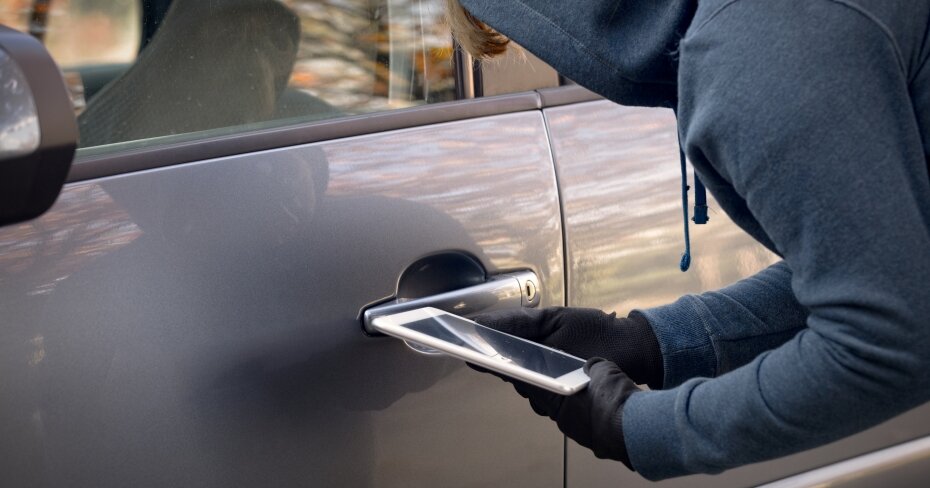Forty per cent of drivers don’t know if they’re driving a high-risk vehicle - Survey
By: Jessica Wei on November 6, 2023
When it comes to dealing with the urgent issue of auto-theft in Canada, government and policing agencies, auto manufacturers, and the insurance industry has called all hands to the deck.
However, drivers may be missing crucial information regarding how to effectively prevent theft from happening from the outset.
A new survey conducted by LowestRates.ca found that despite more than one third of respondents knowing someone who has fallen victim to car theft, relatively few use any kind of anti-theft device such as faraday pouches, steering wheel locks and GPS trackers — even when they have been given out for free.
Moreover, despite research indicating that thieves overwhelmingly target the same handful of common vehicle models, around 40% of respondents don’t know if their vehicle is on the most-stolen list.
To be clear: The responsibility for busting the larger — and darker — organizational forces behind auto theft and reducing these national numbers falls squarely on the shoulders of our law enforcement and auto manufacturers.
However, on an individual level, it’s still true that an ounce of prevention is worth a pound in whatever the opposite of tearing out your hair in exasperation on your driveway, already late for work while on hold with your insurance company is.
Put another way: It’s much easier to deter thieves from making off with your 2019 Jeep Grand Cherokee than it is to try getting it back after it’s gone.
And on that front, more drivers could be working on prevention.
Knowing your vehicle is the first line of defense
When it comes to theft-prevention, it helps to know how at risk you are as a driver of getting your car stolen. One of the strongest tools that drivers have at their disposal is information.
Every year, Équité Association puts out their ten most stolen vehicles list. It’s a compilation of specific car models that are often targeted by thieves, broken down by province.
The most recent list includes late models of Honda Accord, Jeep Grand Cherokee, Toyota RAV4 and other popular cars. Topping that list is the Lexus RX series, which had a theft rate of 6.4%.
In our survey, 12.5% knew they were driving high-risk vehicles, while 41% knew they were not at high risk of theft due to the car model they were driving. Forty per cent did not know whether their car was high-risk.
According to Stéphane McGee, head of product and pricing at Onlia, the survey results track with what his company has been seeing. That’s why he deems it important for insurance companies to be proactive in educating and informing their customers when necessary.
Anti-theft devices slowly catching on with consumers
Typically, the first line of defense against auto theft is through an anti-theft device. There are several products on the market that help to deter thieves from breaking in, and to help identify and recover the car after they have.
In the first camp are steering wheel locks (known as the Club), Faraday pouches (a signal-blocking container so thieves can’t use your key fob to unlock your car), and bollards, which are steel posts installed at the end of a driveway to physically bar thieves from driving away.
In the second camp are GPS trackers, including Apple Air Tags and the Tag System. The Tag system is particularly encouraged by insurers. It’s installed on different parts inside the car and can transmit data back to the police when a car is missing, thus aiding in the recovery of the car.
Of those who have purchased anti-theft devices, 12% opted to install security cameras, 4% owned Faraday pouches, just shy of 10% had steering wheel locks, and 7% used a GPS tracker. A further 11% used a combination of devices.
“Car insurance is typically one of the biggest purchases Canadians will make each year, and tacking on another $500 when inflation and the cost of living continues to rise is a real motivator for drivers to go in and get a Tag installed,” says McGee.
A further 37% of respondents said they had not taken any added precautions to keep their car from being stolen.
Surcharges on anti-theft devices can be a hit or miss with drivers
In an effort to secure more high-risk cars from theft and keep insurance rates down, insurers have begun to introduce surcharges (most amounting to around $500) to drivers of commonly stolen vehicles. The surcharge is then removed after proof of purchase or installation of an anti-theft device. The effectiveness of the surcharge seems to be mixed.
In our survey, 6.5% of all drivers had received a surcharge from their insurer. About a third of those drivers (2.5% of all respondents) simply paid the surcharge without installing an anti-theft device. The rest were evenly split between those who installed the Tag system after given the surcharge, and those who installed a similar anti-theft device.
Onlia does not impose a surcharge and instead, offers the Tag system for free to drivers with high-risk cars. Among those who got the offer, 10% claimed the offer.
“Consumers may know about the rampant car theft in the GTA from seeing it on the news and in the media, but still may not believe that it'll happen to them,” he says. “Others may not feel that a tracking system is worth it, resulting in them not wanting to spend the time it takes to get one installed.”
Comprehensive insurance is a must
Insurance companies are increasingly asking their customers to treat theft prevention with a “layered approach”. The last layer (or the first, depending on how you see it) is making sure your car is insured if a thief gets to it.
In our survey, 7% of respondents increased their coverage, 2% lowered their deductible, and 3.5% took out endorsements to specifically strengthen their auto insurance policy in the event of theft. A further 74% did not make any changes to their policy (though some may have already been adequately covered already).
One crucial piece of insurance that every driver of a high-risk vehicle is comprehensive car insurance, which covers auto theft.
Comprehensive car insurance can be pricy, especially for high-risk vehicles – using the LowestRates.ca auto insurance quoter, we found that a 35-year-old male living in Toronto with a clean driving record, who opted for both comprehensive and collision insurance on his 2021 Toyota Highlander without applying any discounts could get a premium of around $314 per month, or $3,765 per year.
Without comprehensive insurance, his premium is $234 per month, or $2,811 per year — a difference of $80 monthly, or $95 annually. While that sum may seem hefty for some, it’s definitely cheaper than going without it.
Related: How to estimate the cost of insurance before buying a car
“Something surprising that we found when presenting our Tag offer to clients was that some individuals who had newer vehicles opted to not have comprehensive coverage – thus removing the option of being able to claim for a theft down the road,” says McGee.
In an environment where thefts are high, and the cost of cars is even higher, comprehensive car insurance is one piece of insurance that drivers can’t afford not to have.
Personal experience may be the strongest motivator
Like a sudden break-up, or death by vending machine, you never think a car theft is going to happen until it happens to you — or at least, someone you know.
“There have been several media stories aimed at educating and alerting the public about rising auto thefts,” says McGee. “However, not everyone is aware of it. Until someone is impacted personally, it can be off their radar.”
However, more people are getting that cold, hard first-hand experience. Between January to October 2023, police have reported 10,000 cars stolen in Toronto alone. Across the country, car thefts doubled in 2022 in Ontario and Quebec and increased by 20% in Alberta and 35% in the Atlantic provinces.
In our own survey, 34% of respondents personally know someone who has had their car stolen, and 2.5% have experienced it themselves. An additional 2.25% both know a victim of auto theft and are themselves victims.
For the rest who don’t, the danger of waiting to act until it happens to you is that, well, by the time you act, it’ll have already happened.
The good news is there are many different options to protect your vehicle. And with more thefts on the way, it’s never too soon to layer up.
Methodology:
Survey conducted by LowestRates.ca, polling 448 Ontario drivers between Oct. 14 and Oct. 16 who used LowestRates.ca’s auto insurance quoter.


